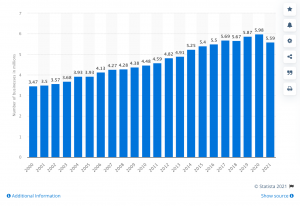If keyword research is the caliber of the bullet, audience targeting is the scope on your rifle.
Here’s a mind blowing fact: Google serves over 100 billion searches a month. That’s people looking for celebrity gossip and games, to stock markets and financial advice, to – you guessed it – local businesses and services just like yours.
However, with the staggering number of people searching, how can you capture the ones who are qualified prospects for your service? The keywords a customer uses is a great indicator for whether or not they’re likely to purchase a service from you, but there are other factors that influence their willingness to convert: their location, the day of week and time of day, and the device they are on.
When correctly implemented, these fundamental strategies will improve your Search Engine Marketing results and get you more business over time. Sound good? Then read on.
Location, location, location.
Compared to the big brands, audience targeting strategies for small businesses are incredibly distinct: they need to be hyper-local in order to pinpoint a qualified client. Targeting these people out of the billions of other searchers who use the Internet is called “location targeting”.
Google allows you to target based on location, which seems simple enough. You might think to select your county (and maybe a few counties around it) and be done, but don’t make that mistake: “set it and forget it” is the antitheses of Adwords success. You’ll need to be much more nuanced than that to maximize your chances of success.
There are a few main factors to consider when setting up your location targeting.
Local consumer behavior patterns: People in New York City rely heavily on public transportation to get them to their local services, making commuting far away a real pain. However, if your service is based in the Midwest, and driving to your place of business is easy, you might have more leeway.
The nature of your service: Take into account how often your business is frequented by your customers. Some businesses, like salons or spas, are visited by the same consumers on a monthly basis, while services like dentists or lawyers aren’t used as often. For the latter type of business, consider targeting cities – or even counties – away, as customers are more willing to drive the extra mile for a business they go to infrequently.
The demographics of your area: If you offer high-end services, you’ll want to focus your advertising on areas that have people who can afford what you’re offering. In this type of scenario, targeting by zip code can help you more precisely target your ads to the people who should see them.
Day, night, or in between?
For this thought experiment, let’s pretend you’re a locksmith. You have your AdWords campaign chugging along and you get a decent amount of clicks – some qualified, some not. You have your ads to setup during business hours on weekdays, because that’s when peak traffic is. If I were consulting this business, I would tell them to create a campaign targeted to mobile devices during 7:00pm-7:00am. Why?
The type of person who clicks on an ad on their phone in the middle of the night for locksmith services is the type of person who will hand you money in a second. Scheduling the timing of your ads – commonly referred to as ‘day parting’ – is one of the most important concepts in all of SEM.
The most obvious use is to only serve your ads in the middle of the day (while kicking up your bids to beat out competitors) – and this certainly works. However, in the scenario I outlined above, we served our ads in the dead of night where almost no traffic existed. Because of that, we had no real competitors, purchased a highly qualified, and closed the deal. The guiding consideration is not how high-volume a particular time period is, but rather how high-converting it is.
When deciding how to handle off-hours traffic, it’s critical to think through the conversion thought process for your industry.
Let’s Tie It All Together
A searcher’s context can be very important in assessing their level of interest in your business. Appreciating these nuances, starting with what makes sense for your business, and then refining your setup as you obtain data are the keys to using context to the greatest effect.
Every industry – and every business therein – is vastly different. In order to succeed, you need to think outside the box and refine your campaigns constantly. Start with the concepts I’ve outlined here, and drop me a line if you need some extra help.
Digital & Social Articles on Business 2 Community(68)
Report Post






